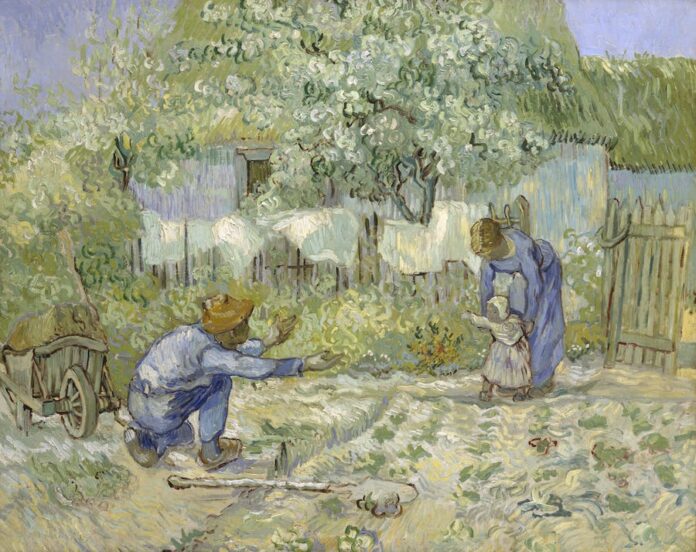Throughout history, artists have honored their fathers and their own paternity, as well as famous fathers of history in their art. We have dedicated this article to six father-inspired paintings that you need to know.
The Creation of Adam, Michelangelo
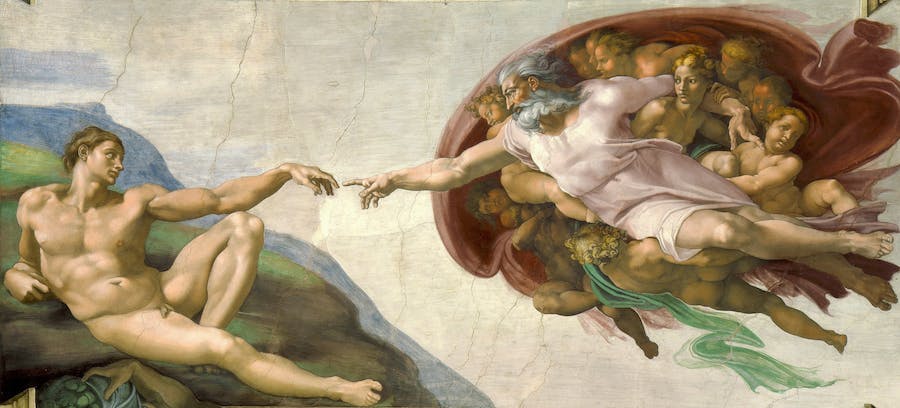
Perhaps the most famous depiction of God in art history is Michelangelo’s Creation of Adam. This fresco adorns the ceiling of the Sistine Chapel in Rome and illustrates the beginning of humanity. God, the father of the world, rushes to Adam, lying listlessly with an outstretched hand, to bless him with the spark of life.
The Artist’s Father, Reading L’Événement, Paul Cezanne
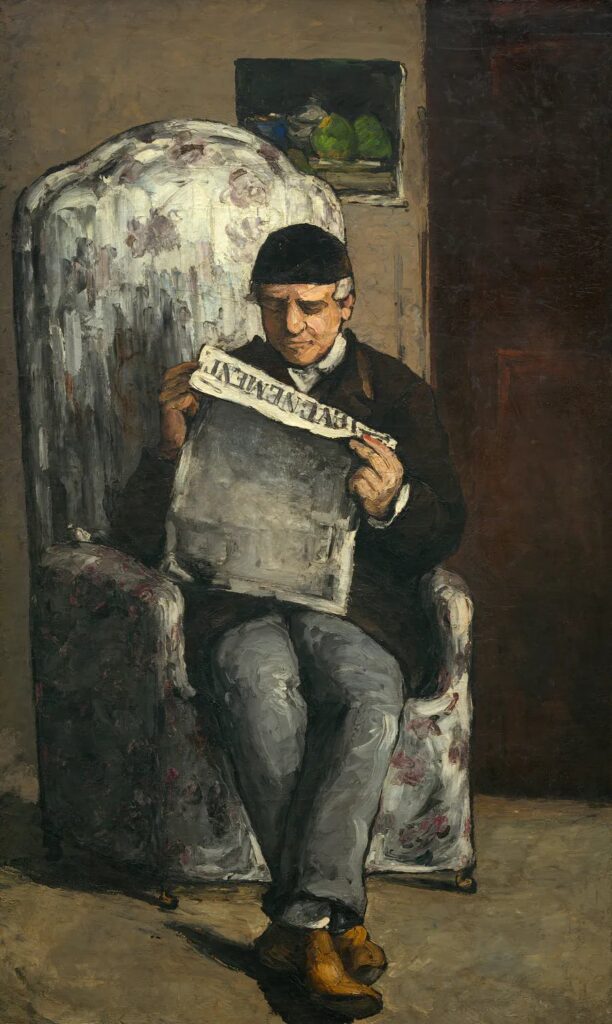
Paul Cezanne’s father was a wealthy French banker and wanted his son to become a lawyer. Obeying his father, Cezanne entered the Faculty of Law of the Ex-University, but at the same time continued to study art. In 1861 he moved to Paris to devote himself entirely to art.
His father was disappointed. Nevertheless, he gave Cezanne a significant inheritance that would feed the artist for the rest of his life. In 1866, Cézanne painted his father reading. This father-inspired painting was his first work, which was accepted into the Paris Salon after many years of unsuccessful attempts.
This piece of fatherhood art is kept in the National Gallery of Art now.
The Return of the Prodigal Son, Rembrandt
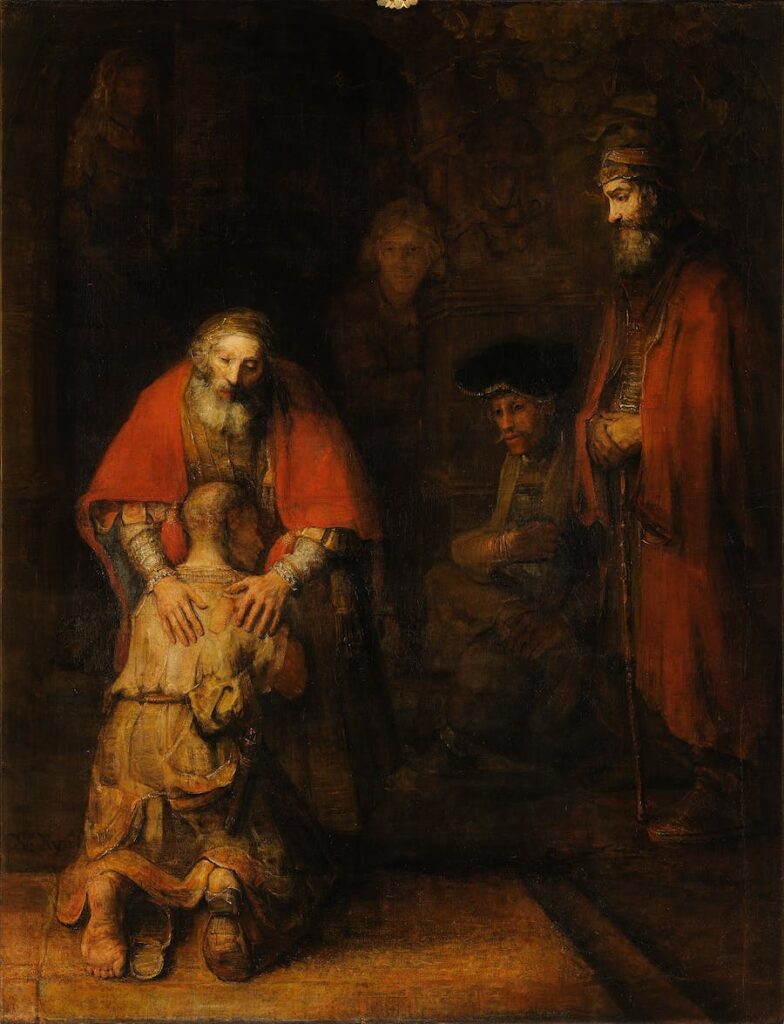
Rembrandt depicts the famous moment in the biblical parable when the prodigal son returns to his father, begging for forgiveness, and he is greeted with open arms. This allegory of God’s fatherly love was one of Rembrandt’s favorite motifs, which he explored through many means. This particular painting was probably painted within a few years of the artist’s death in 1669.
The work of fatherhood art is considered one of Rembrandt’s masterpieces and hangs in the Hermitage in Saint Petersburg.
Portrait of Alexander J. Cassatt and His Son, Robert Kelso Cassatt, Mary Cassatt
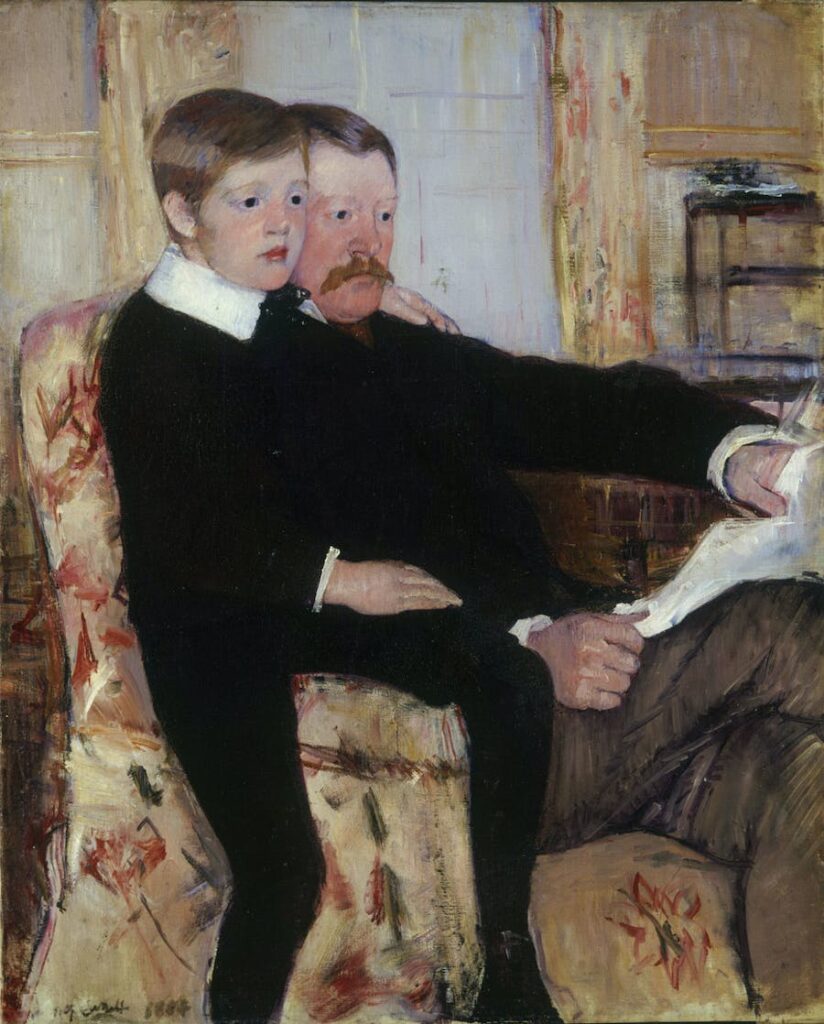
Mary Cassatt is best known for her depictions of mothers with children. But she also painted several portraits of her brother Alexander Cassatt, president of the Philadelphia Railroad and art collector.
This delicate double portrait of her brother and son Robert was painted during their visit to the artist in Paris in 1884. Today this one of the father-inspired paintings is a part of the collection of the Philadelphia Museum of Art.
Brita and I, Carl Larsson
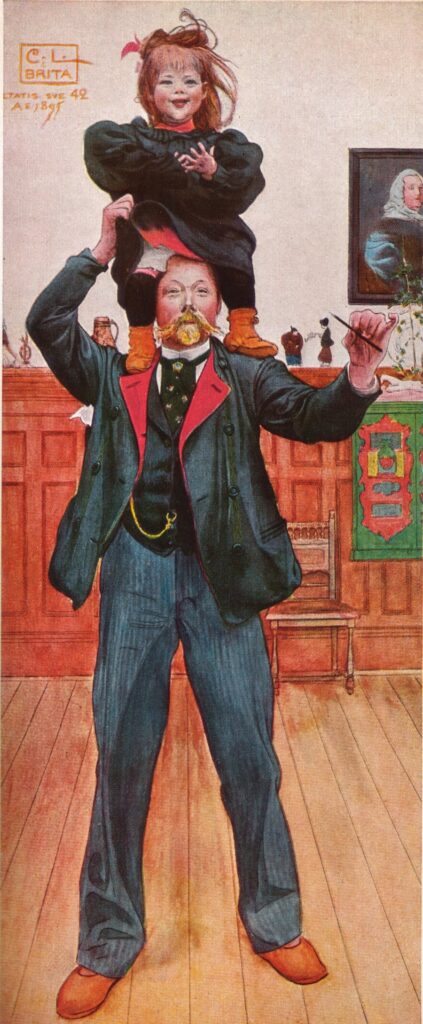
Swedish artist Carl Larsson had an unhappy childhood in Stockholm and a conflicted relationship with his own father. His father once told the artist that he cursed the day he was born. After spending years studying plein-air painting in France, he returned to Sweden in 1888 with his wife and a family of eight children.
His work often captured the sweet moments of family love that Larsson so desperately craved as a child. This watercolor self-portrait, a great example of father-inspired paintings, was painted in 1895 with his two-year-old daughter Brita and is now in the National Museum in Stockholm.
First Steps, after Millet, Vincent Van Gogh
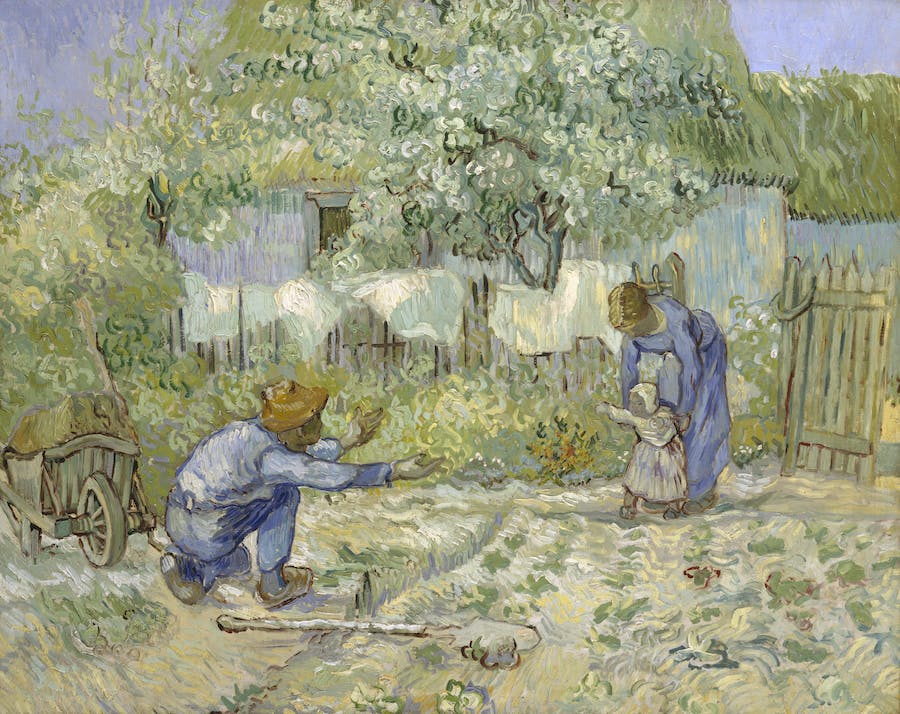
This 1890 oil painting depicts a father farmer reaching out his arms to his young child, taking his first steps, accompanied by his mother. From 1887 to 1890 Vincent van Gogh was institutionalized. During this period, he copied the work of other artists
This one of father-inspired paintings was a copy of the 1858 chalk and pastel work of the same name by Jean-Francois Millet, which Van Gogh duplicated from a photograph. Today, the copy painted by Van Gogh, made in his characteristic style and soft colors, is in the Metropolitan Museum of Art.






